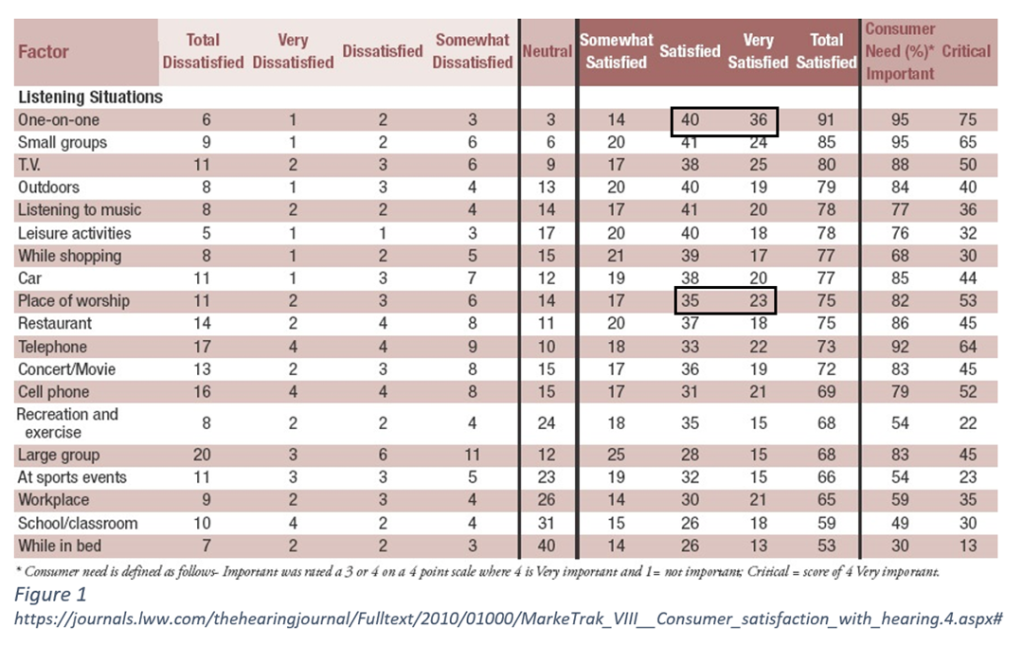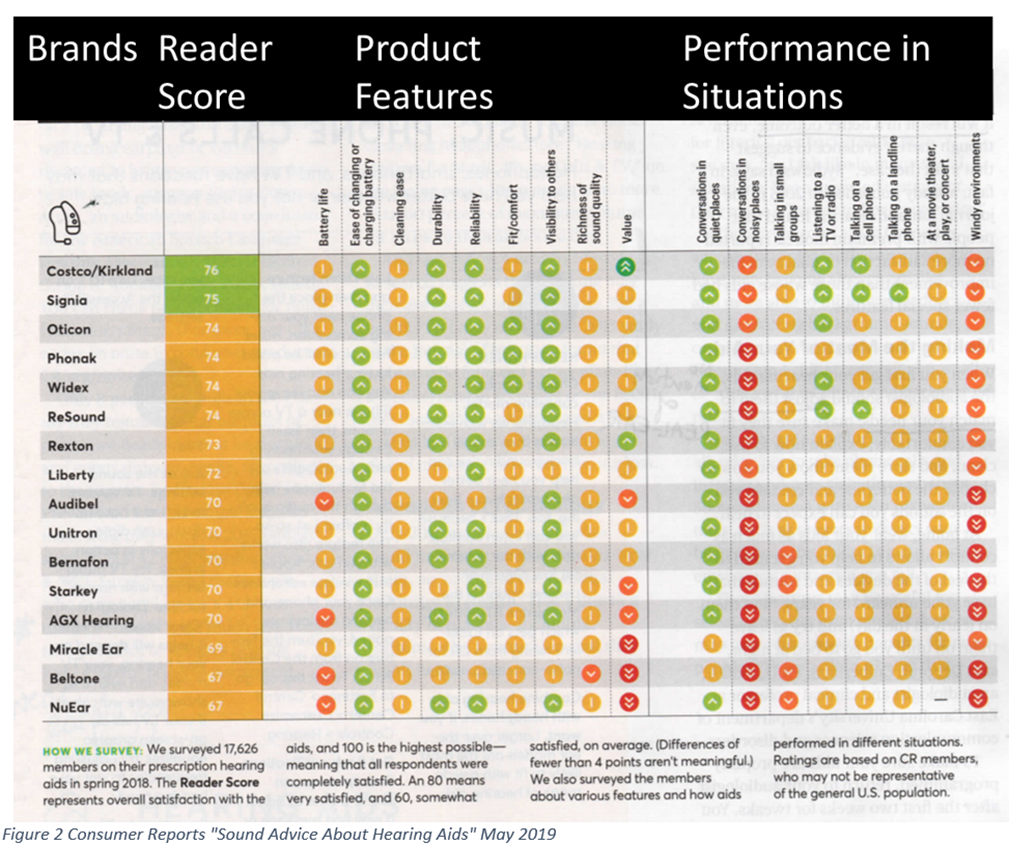(To find out what horse racing has to do with hearing aids, listen to Dr. Brian Taylor’s podcast)

People purchase hearing aids because they want to hear in situations that are important to them. It is easy to reason that the more situations the devices improve the person’s ability to hear, the happier the owners of those devices are going to be.
Sergei Kochkin (2010) has researched hearing aid satisfaction in detail. He documented that consumer are much more satisfied with their hearing aids when they have high multiple environmental listening utility (MELU) with their devices. Higher scores were obtained in users who reported increased hearing aid utility. Participants in his study were asked to rate their satisfaction with hearing aids in 19 typical listening situations. He used a 7-point Likert scale which ranged from “very dissatisfied”, “dissatisfied”, “somewhat dissatisfied”, “neutral”, “somewhat satisfied”, “satisfied” to “very satisfied”. The patient’s MELU rating is the percent of listening situations in which hearing aid users were “satisfied” or “very satisfied.” Kochkin documented that the “somewhat satisfied” scores (see in the image below) did not contribute to overall hearing aid handicap improvement scores and therefore should not be included in overall hearing aid satisfaction. The highest satisfaction levels with hearing aids were obtained in one-on-one communication (76%), followed by small groups, TV, listening while riding in a car, and listening to music, all in the 60% range, hearing in places of worship scored 58%, and scores for hearing in large groups, classroom or workplace are closer to 50% satisfaction or less. (See figure 1)

A Consumer Reports’ survey of 12,000 users (published in May 2019) pooled consumers’ experiences in 8 situations (conversation in quiet places, conversation in noisy places, talking in small groups, Listening to a TV or radio, talking on a cell phone, talking on a landline phone, at the movie theater, play or concert and windy conditions) – the average satisfaction (where 100% meant satisfied in every condition) was in the 70% range with significantly better scores in quiet (as shown by dark green and light green circles), neutral scores for far-field listening situations and on the phone (shown in yellow), and generally poor scores (in orange and red) in noisy and windy environments.

These survey results demonstrate that hearing aids can do a good job for near-field and quieter situations, but they are not able to handle the users’ communication needs in background of noise and in far-field situations. For many users this is due the nature and severity of their hearing loss, and the fact that they need signal-to-noise ratios that hearing aids – when used in situations beyond 3-6 feet – are simply unable to provide.
What if there is a way to dramatically improve audibility or signal-to-noise ratios in situations that are important to consumers? (Think weekly attendance at religious services or attending lectures or an occasional theater performances.) A solution that not only helps consumers hear, but will also improve the overall hearing aid satisfaction. Something, Dr. Kochkin surmised in a 20Q interview with Dr. Gus Mueller for AudiologyOnline, would benefit the hearing industry as a whole. Such as solution exists today. But this solution, permanently installed hearing loops (as well as other assistive technology equipped with neckloops – as mandated by the Americans with Disabilities Act) can only be accessed, and benefit users, if the hearing devices are equipped with telecoils.
Good News!
For the last couple of years, consumers and their providers have had to choose between hearing aids that offered telecoils or wireless connectivity, or hearing aids that included rechargeable batteries but no telecoil. When consumers demanded small cosmetically appealing rechargeable hearing aids the options for a device that included a telecoil were slim to none. No longer – Enter the Superfecta hearing aid.
Superfecta devices no longer require providers to compromise in selecting useful features for clients. These devices have it all – and as such, just might increase hearing aid satisfaction, but only when the benefits of the telecoil are discussed and demonstrated, clients are referred to hearing loop (or neckloop) equipped venues following the fitting, and even better yet, if their hearing care providers become active hearing loop advocates by sharing HLAA’s Get in the Hearing Loop Advocacy materials.
Listen to the AudiologyOnline podcast where Drs. Brian Taylor and Juliëtte Sterkens go into detail on the four essential hearing aid features (rechargeability, small form factor, direct streaming to smartphone and a telecoil), how such devices will expand the multiple environmental listening utility (MELU), tips on programming, verifying and validating of telecoils, hearing loop advocacy, and why everyone ought to place their bets on superfecta hearing aids.
References:
1. www.audiologyonline.com/articles/more-highlights-from-marketrak-6830
2. www.yumpu.com/en/document/read/25303233/increasing-hearing-aid-adoption-through-multiple-phonak
3. https://journals.lww.com/thehearingjournal/Fulltext/2010/01000/MarkeTrak_VIII__Consumer_satisfaction_with_hearing.4.aspx#
4. www.hearingreview.com/hearing-products/accessories/assistive-technologies/the-advent-of-superfecta-hearing-aids-with-telecoils